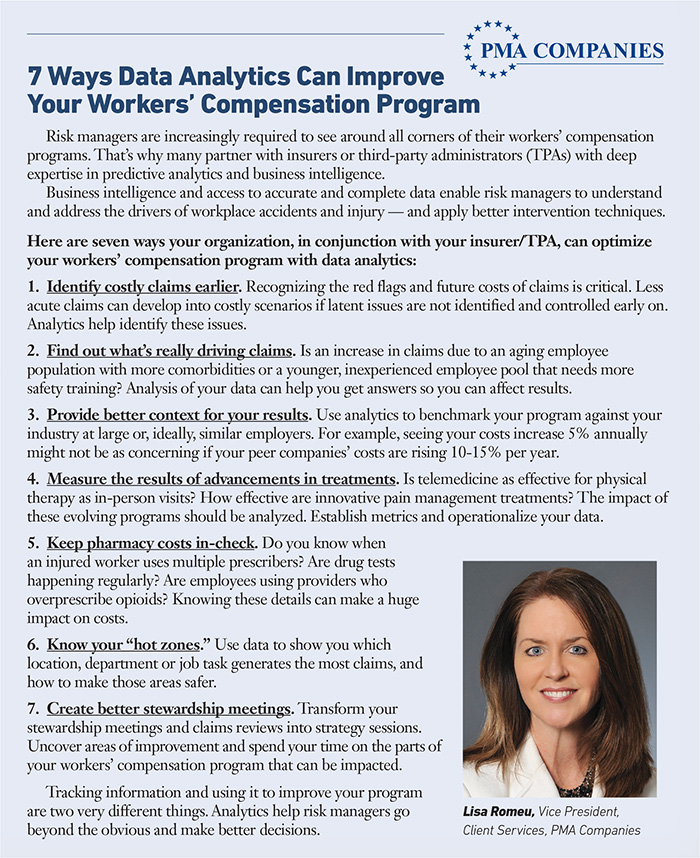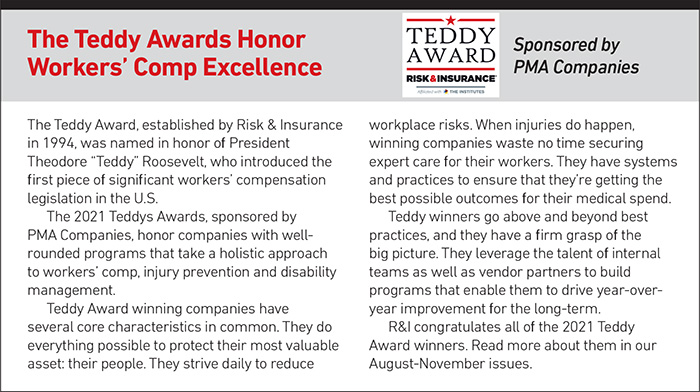Soaring Heights: How JetBlue Put Stock in Company Culture and Cut Back on Workers’ Comp Costs in the Process

If there’s one title Lee Garvin wears proudly, it’s “crew member.”
Before stepping into the role of director of risk management at JetBlue Airways, Garvin worked as a pilot, flying on-demand charter planes, organ donor flights and scheduled air service for seven years.
Though he’s no longer taking to the skies, Garvin still considers himself a “crew member” in his role at JetBlue. In fact, every member of the company, from the CEO to the person who works baggage claim, is considered part of the crew.
“At JetBlue everybody’s a crew member regardless of what their duties are. You don’t have to fly an airplane to be considered a crew member,” Garvin said.
Teamwork, equality and a dedication to serve — it’s embedded in how JetBlue employees view their colleagues, and it’s the driving force of its workers’ compensation program.
In 2008, Garvin and his team decided to revamp the company’s workers’ comp system with the idea of using the company’s advocacy-based culture as the driving force.
Since then, they’ve developed a number of automated processes that help make the claims process easy for injured workers and expanded the workers’ compensation team to make sure that an injured worker feels supported every step of the way.
The team’s commitment to employee health and wellbeing enabled the airline to quickly implement new safety protocols when the COVID-19 pandemic struck last year. It also garnered them a 2021 Teddy Award.
Putting Company Culture at the Fore
Garvin first came to JetBlue 17 years ago as the airline’s first risk manager. About four years into his tenure, he was asked to step in and manage the workers’ compensation program as well.
Airlines require fast-paced work, lifting and loading cargo onto planes so that they can take off on time. Crew members may spend hours standing on tarmacs and other hard surfaces.
Strains and sprains to the back, shoulders and knees are common injuries, as are slips and falls, which occur as pilots, flight attendants and other airline employees rush through busy airports.
When Garvin took charge of the program, workers’ comp costs were not a point of focus, which could have long-term impact to the bottom line. His focus was creating streamlined processes, increasing awareness and reducing costs.
“The part that we lost sight of was the culture piece — treating our crew members as we treat our customers,” he said.
While the spirit of worker advocacy is a natural fit for JetBlue’s company culture, it took a push from the CEO to drive Garvin and his team to mold the workers’ compensation program around the needs of the injured worker.
“The CEO said, ‘Lee, we need to treat these injured crew members like we treat our customers,’ ” Garvin recalled.
“We looked at it through that eye and then tried to figure out how to revamp the workers’ comp program with a real culture-forward approach.”
With that in mind, Garvin went about transforming the workers’ compensation program so that it would better meet the needs of the injured worker.
Every JetBlue employee attends orientation at JetBlue University, the airline’s training facility in Orlando, Fla. Garvin brought the workers’ comp program’s broker, third-party administrator and insurance carrier into the university so they would have a unique view into the company’s culture.
“It really helps them feel like this is what it means to be a crew member. This is what it means to work on the JetBlue program,” said Kyle Raucy, manager of workers’ compensation for JetBlue.
The workers’ comp team then went about developing a process that simplifies everything from finding a doctor to getting claims paid, all while offering continuous support to the injured worker.
“Taking care of the crew member really drives every decision we make,” Raucy said.
Automated Technology Makes the Claims Process a Breeze
When a workers’ compensation claim is filed, an injured worker can be overwhelmed with feelings of pain, confusion and fear. For many, this is their first time dealing with the complexities of filing a workers’ comp claim and finding approved medical care, and the process can be stressful.
JetBlue recognizes these struggles and tries to make sure its injured crew members have continual support throughout the workers’ compensation process.
When a crew member is injured, the first thing that happens is they receive an automated Hello Letter that outlines the process, so they know what to expect. For catastrophic cases, JetBlue employs an automated catastrophic nurse program that directs injured crew members to immediate care options.
The automated system helps make sure crew members still feel like they’re part of the team even after a work injury. It is also designed to reduce any feelings of stress and confusion they may be feeling at the beginning of a claim.
“The reason that I asked Kyle to make sure we design this around continual contact is because there’s so much going on right at the beginning of a claim,” Garvin said. “I don’t want crew members to not know where they are in their process or what the next step is.”
After the initial contact is made, claims adjusters then provide a list of three to five vetted physicians to the injured worker to make sure they can get the best quality medical care.
This procedure is especially helpful, since JetBlue has workers in multiple states, and an injured crew member may not know which doctors in their location are covered by their workers’ comp benefits.

“It’s more about removing pain points — trying to get workers the best possible care and making sure that they’re not the ones who are having to try and find these doctors,” Raucy said.
At the end of a claim, JetBlue sends out a survey to each injured worker to see if there’s anywhere in the claims process to improve. “Where there’s negative comments, we obviously look into those to see what the issue is,” Raucy said.
“I love the comments,” Garvin added. “The feedback is tremendously valuable.”
To help keep control of all these automated systems, the airline uses the JetBlue playbook — a detailed document that outlines the IT automations, processes and procedures the team has developed. This book makes it easy for TPAs, brokers and carriers to understand the system.
And these changes haven’t just made the workers’ compensation process easy for JetBlue employees; they’ve also helped the company’s bottom line.
In the five-year period from 2016-2021, JetBlue reduced its total incurred loss by almost 60%. Total medical incurred costs decreased by more than 55% over the last five years even as the cost of treatments increased.
COVID-19 Met Its Match
JetBlue’s commitment to protecting its workers enabled the airline to act quickly to protect employees when COVID-19 struck.
The company implemented new safety procedures, including temperature checks and testing programs for crew members, personal protection packs for customers and enhanced cleaning protocols across its aircraft and facilities, including filtering cabin air with hospital-grade HEPA air filters to reduce virus exposure. Additionally, JetBlue offered paid sick leave and other time off programs so crew members wouldn’t come to work sick.
“We didn’t miss a beat,” Raucy said. “We had this huge event and from the work comp perspective, we really didn’t miss a beat in the service that was being provided.”
The workers’ comp team also worked hard to communicate with crew members about any care delays they may experience due to the pandemic and to implement telemedicine programs where possible, so that care wasn’t put on hold.
“We had to do a couple of things to make sure we didn’t have any crew members who got lost or fell through the cracks,” Raucy said.
All in all, the workers’ comp program saw scant impact as a result of the pandemic, a success the team attributes to its spirit of service and teamwork.
“When it comes to communication, it’s important to me that there’s no dead air for a crew member. We want them to know that we are there with them at all times,” Garvin said. &
See the complete list of 2021 Teddy winners here.











